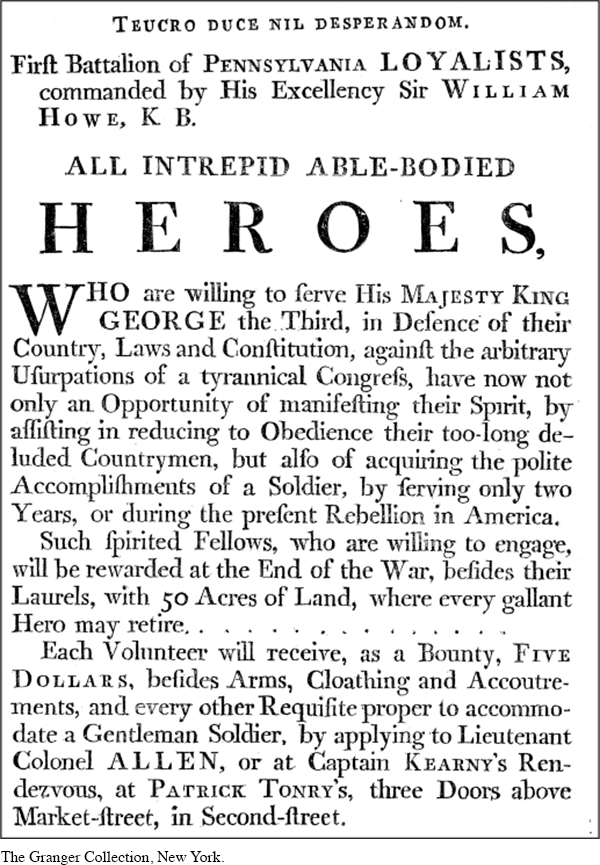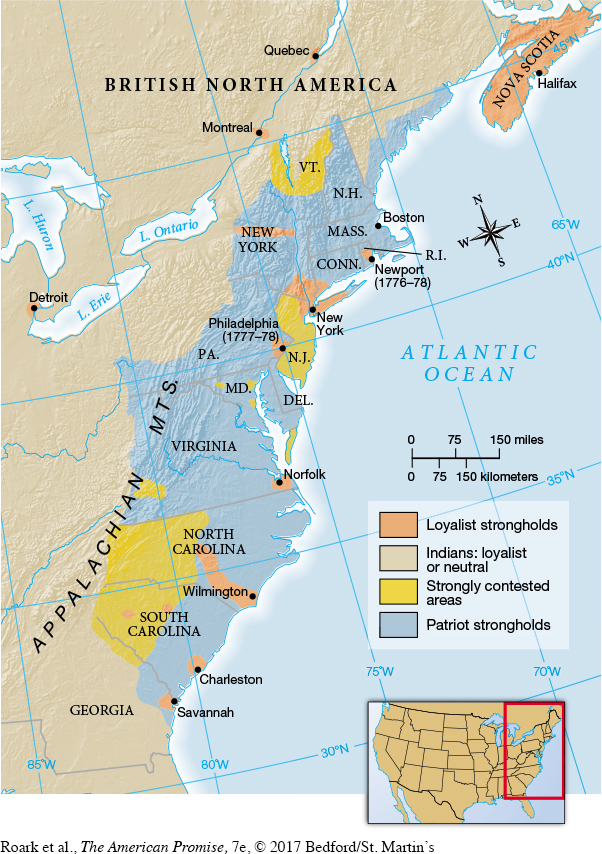The American Promise: Printed Page 178
The American Promise, Value Edition: Printed Page 163
The American Promise: A Concise History: Printed Page 189
The Loyalists
Around one-

The American Promise: Printed Page 178
The American Promise, Value Edition: Printed Page 163
The American Promise: A Concise History: Printed Page 189
Page 179Pockets of loyalism existed everywhere (Map 7.2). The most visible loyalists (called Tories by their enemies) were royal officials, not only governors but also local judges and customs officers. Wealthy merchants gravitated toward loyalism to maintain the trade protections of navigation acts and the British navy. Conservative urban lawyers admired the stability of British law and order. Some colonists chose loyalism simply to oppose traditional adversaries, for example many backcountry Carolina farmers who resented the power of the pro-

Many Indian tribes chose neutrality at the war’s start, seeing the conflict as a civil war between the English and Americans. Eventually, however, they were drawn in, most taking the British side. The powerful Iroquois Confederacy divided: The Mohawk, Cayuga, Seneca, and Onondaga peoples lined up with the British; the Oneida and Tuscarora tribes aided Americans. One young Mohawk leader, Thayendanegea (known also by his English name, Joseph Brant), traveled to England in 1775 to complain to King George about land-
The American Promise: Printed Page 178
The American Promise, Value Edition: Printed Page 163
The American Promise: A Concise History: Printed Page 189
Page 180Loyalists were most vocal between 1774 and 1776, when the possibility of a full-